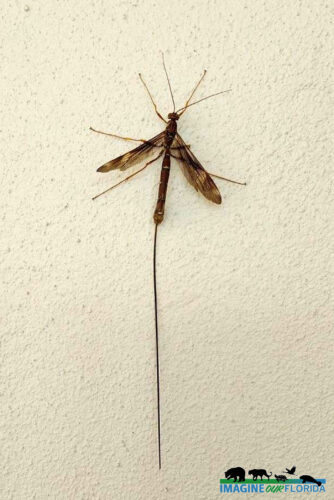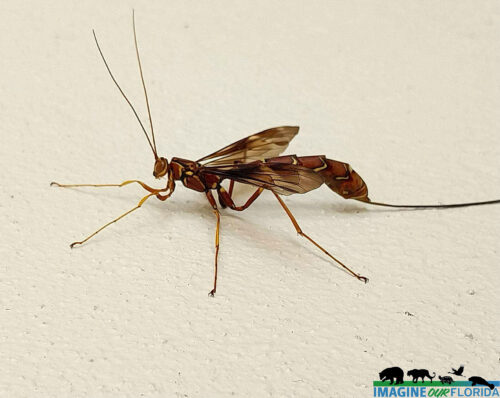Long-Tailed Giant Ichneumonid Wasp (Megarhyssa macrurus) is a large reddish brown and yellow wasp with black coloring throughout the body. It is 1.5 inches long with an ovipositor 2-3 inches long. This insect is found on declining or dead hardwood trees between May and July. Due to their body structures, they can sometimes be mistaken for mayflies or dragonflies.
Ichneumonid wasps are parasitic to other insects, such as horntails, a wood-eating sawfly. Ichneumonid wasps are usually found on dying or dead hardwoods, such as oak, maple, birch, and elm as these are the wood preferred by horntails. They can drill about an ½ inch or more into the wood using their ovipositor to deliver an egg into the horntail larvae. Once the egg hatches, the larvae will slowly feed on the horntail, eventually killing it. Once it matures, the adult will emerge out of the tree. These wasps do not harm the trees; they only feed on the horntail.
These wasps are harmless to humans. However, if threatened, they will jab their ovipositor, resulting in a minor wound. Because they are parasites on other insects, they can be considered a biological pest control agent.


